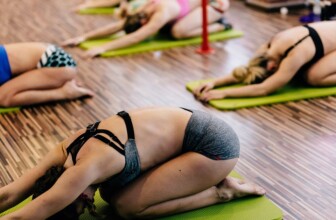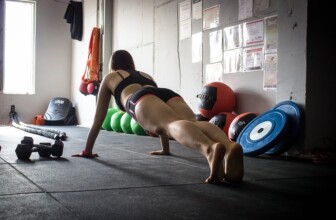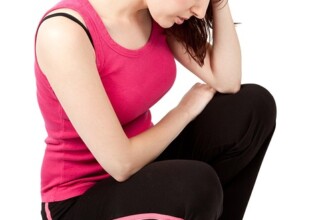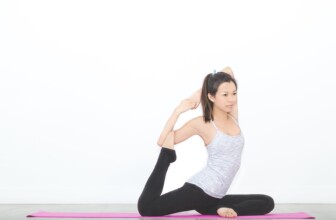Clear Skin Ahead: The Ultimate Guide to Effective Acne Treatments
Acne is one of the most common skin ailments affecting people of all ages, with a significant impact on physical appearance, self-esteem, and overall mental health. While commonly associated with adolescence, a growing number of adults are also having their share of acne-related concerns.
This comprehensive guide covers everything you need to know about effective acne treatments, from understanding the causes of acne to exploring various treatment methods and preventive measures.
Table of Contents
- Understanding Acne
- Different Types of Acne
- Causes of Acne
- Effective Acne Treatment Strategies
- Over-the-Counter Treatments
- Prescription Medications
- Natural Remedies
- Lifestyle Changes for Clear Skin
- Case Studies: Real-life Experiences
- Q&A Section
- Resources
- Conclusion
- Disclaimer
1. Understanding Acne
Acne is a skin condition characterized by the presence of pimples, blackheads, whiteheads, and cysts. It occurs when hair follicles become clogged with oil (sebum) and dead skin cells. Although acne is most prevalent among teenagers, many adults also deal with it due to factors such as hormonal changes, stress, and dietary habits.
Key Points:
- Acne can appear on various areas of the body, including the face, back, chest, and shoulders.
- The severity of acne can range from mild (occasional blemishes) to severe (widespread cystic acne).
2. Different Types of Acne
Understanding the different types of acne is crucial for effective treatment. The main types include:
2.1. Comedonal Acne
This type includes blackheads and whiteheads. Blackheads are open comedones, whereas whiteheads are closed.
2.2. Inflammatory Acne
Characterized by red, swollen bumps, inflammatory acne includes papules and pustules. Papules are firm lumps, while pustules contain pus.
2.3. Cystic Acne
This is a severe form of acne that presents as painful, swollen cysts beneath the skin's surface. Cystic acne can lead to scarring and requires professional treatment.
2.4. Acne Vulgaris
The most common form, encompassing comedonal and inflammatory acne, often seen in adolescents.
3. Causes of Acne
Understanding the underlying causes of acne can help in prevention and treatment. Common causes include:
3.1. Hormones
Androgens, male hormones present in both males and females, increase the size of sebaceous glands and the production of sebum.
3.2. Genetics
A family history of acne can increase the likelihood of developing the condition.
3.3. Diet
High glycemic foods, dairy products, and certain fats have been linked to triggers for some individuals.
3.4. Stress
Increased stress levels can lead to hormonal changes that trigger acne.
3.5. Certain Medications
Medications like corticosteroids or those that contain androstenedione can worsen acne.
4. Effective Acne Treatment Strategies
4.1. Over-the-Counter Treatments
Many individuals start with over-the-counter (OTC) treatments, which can be effective for mild to moderate acne.
Popular OTC Ingredients:
- Benzoyl Peroxide: Kills bacteria and reduces oil production.
- Salicylic Acid: Helps unclog pores by promoting cell turnover.
- Alpha Hydroxy Acids (AHAs): Derived from fruits, AHAs help exfoliate and reduce inflammation.
4.2. Prescription Medications
For more severe forms of acne, prescription medications may be necessary:
Popular Prescription Options:
- Topical Retinoids: Such as tretinoin and adapalene help unclog pores and prevent new acne lesions.
- Oral Antibiotics: For reducing inflammation and bacteria.
- Isotretinoin: A powerful medication used for severe cases; highly effective but with potential side effects.
4.3. Natural Remedies
Some individuals prefer holistic approaches:
- Tea Tree Oil: Known for its antibacterial properties.
- Honey and Cinnamon Mask: Can help soothe inflammation and redness.
- Green Tea: Applying cooled green tea offers antioxidant properties.
5. Lifestyle Changes for Clear Skin
Implementing lifestyle changes can significantly reduce acne flare-ups.
5.1. Diet
- Incorporate more fruits, vegetables, and whole grains into your meals while reducing sugary foods and dairy.
- Stay hydrated with plenty of water.
5.2. Skincare Routine
- Establish a daily skincare routine that includes cleansing, exfoliating, and moisturizing.
- Avoid oily cosmetics and ensure makeup is non-comedogenic.
5.3. Stress Management
- Engage in activities such as yoga, meditation, or exercise to lower stress levels.
5.4. Sleep Hygiene
- Aim for 7-9 hours of sleep nightly; this is essential for skin regeneration.
6. Case Studies: Real-life Experiences
Case Study 1: Teenager with Acne Vulgaris
Background: A 16-year-old female experienced severe acne on her face and back, leading to low self-esteem.
Treatment: After consulting with a dermatologist, she began using topical retinoids and adopting a healthier diet.
Outcome: Six months into the treatment, her skin cleared significantly, and she reported increased confidence.
Case Study 2: Adult with Cystic Acne
Background: A 25-year-old male suffered from cystic acne on his jawline.
Treatment: Prescribed isotretinoin, combined with lifestyle changes like improved diet and stress management.
Outcome: After a year, the patient reported a marked decrease in acne lesions, improved skin texture, and overall well-being.
7. Q&A Section
Q: What is the best way to treat acne?
A: The best treatment varies by individual; mild cases often benefit from OTC products, while severe acne may require prescription medications.
Q: Are natural remedies effective for acne?
A: Some individuals find relief using natural remedies, but results can vary. It's best to consult a dermatologist for a tailored approach.
Q: Can diet affect acne?
A: Yes, diet can play a role. Foods with a high glycemic index and dairy have been linked to acne flare-ups in some individuals.
Q: Is it safe to pop pimples?
A: No, popping pimples can lead to infection, scarring, and more acne. It’s better to leave it to the professionals or treat it with proper skincare.
8. Resources
| Source | Description | Link |
|---|---|---|
| American Academy of Dermatology | Comprehensive dermatology resources including acne treatment guidelines. | aad.org |
| Mayo Clinic | Trusted medical advice on acne treatment and prevention. | mayoclinic.org |
| The Acne Resource Center | A resource for those managing acne, offering tips and support. | acneresource.org |
| National Institutes of Health | Research articles outlining skin health and acne studies. | nih.gov |
Conclusion
Acne is a multifaceted condition requiring a comprehensive understanding of its causes and treatment options. By exploring both medical and lifestyle approaches, individuals can take proactive steps in managing acne. This guide emphasizes the importance of personalized treatment plans and the integration of holistic health practices to achieve clearer skin.
Future Trends
- Increased research into the role of gut health and microbiome in acne treatment.
- Advances in laser and light therapies as alternatives to traditional medications.
- Growing popularity of personalized skincare products based on genetic analysis.
Disclaimer
The information provided in this article is for informational purposes only and should not be considered as medical advice. Always consult a physician or dermatologist for diagnosis and treatment options tailored to your individual needs. This guide does not guarantee results and may not apply to all individuals.
This guide should give you a solid foundation for addressing acne effectively, combining medical insights, real-life examples, and practical advice for improving skin health.










